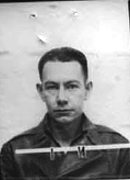Clyde Wiegand (1915-1996) was an American physicist.
Wiegand was born in Long Beach, Washington. He received a B.S. from Willamette University and was studying for his doctorate at the University of California at Berkeley under Emilio Segrè, when he was recruited to join the Manhattan Project at Los Alamos.
During his time there, Wiegand worked on the design of the bomb detonator. He also witnessed the Trinity Test on July 16, 1945.
After the war, Wiegand returned to UC Berkeley to complete his Ph.D. He then joined the Lawrence Berkeley National Laboratory, where he would work for almost 40 years. Wiegand was part of the team which discovered the antiproton in 1955. His colleagues Emilio Segrè and Owen Chamberlain won the Nobel Prize in 1959 for the discovery, while Wiegand’s omission was surprising to many. “It would have been completely right,” Chamberlain later asserted. “Three names instead of two.” Chamberlain also noted that Wiegand “was unequaled in his ability to put together an experiment and make it work. He frequently opened my eyes to new experimental possibilities.” Wiegand’s later research included work on kaonic atoms.
Clyde Wiegand died in Oakland on July 5, 1996.





